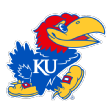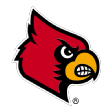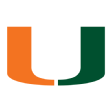As the snow fell around us all weekend, we were bunkered deep inside GK Central, brewing our first batch of this year’s Secret Sauce. The 2016 vintage has begun to bubble, but before we can slap a label on it and slather it all over this year’s crop of Giants and Killers, we thought we’d take a look at five top teams who appear to be largely immune to upset-minded squads. We don’t need full Giant ratings to see that they excel in many of the areas that are essential in warding off a Killer, particularly forcing and preventing turnovers and rebounding at both ends. Statistical profiles can still change over the final few weeks of the season, but fans of these teams can feel a bit more comfortable making early plans for the NCAA tournament's second weekend.
Three losses in five games is officially cause for panic in Lawrence. This tough trip through the Big 12 gauntlet might be revealing some flaws in Kansas’ title hopes, but don’t take that to mean that the Jayhawks will be early tournament victims. Instead, they are built to handle mid-major foes, because they play all aspects of the possession game extremely well. For instance, they give up few second shots, allowing offensive rebounds on just 26.2 percent of opponents’ possessions. That number might be even more impressive come March if the Jayhawks find a way to incorporate Cheick Diallo and his 25.1 percent defensive rebound rate. Kansas doesn’t chase down its own missed shots with the same level of aggression, but it still ranks in the top half of the country with a 31.2 offensive rebound percentage.
In Monday night’s loss to Iowa State, the Jayhawks turned the ball over 16 times, but that was highly unusual: Kansas ranks 55th nationally with a 16.4 percent turnover rate. On defense, they do a good job of pressuring the ball, forcing miscues on 19.2 percent of opponents’ possessions. Taken together, those four stats mean Kansas generally will get more shots at the basket than its opponent. And when that opponent is significantly less talented, as should be the case in the tournament’s first two rounds, that makes an upset unlikely. If that’s not enough to ease concerns in Kansas, focus on the “flu shot.” That’s what we call it when a Giant appears to be inoculated against a favorite weapon of Killers. In this case, our model doesn’t recognize 3-point defense as a significant factor in preventing upsets. However, 3-point attempts are important for Killers. And Kansas only lets foes launch 31.8 percent of their shots from deep, well below the national average of 35.2. So the Jayhawks are well positioned to block a normally dangerous avenue to an upset. Now, they just need to start winning enough games to maintain a projected high seed.
If our model had a mean streak, it would bash silly humans and their silly polls. For some reason, Louisville stands just 16th in the latest AP rankings, even though the Cardinals have lost just three games (same as No. 3 Iowa), sport the nation’s second-best defense (an adjusted 88.9 points allowed per 100 possessions) and rank third on KenPom.com and fourth in ESPN’s BPI. No matter: Pollsters figure to get a long look at Louisville in the tourney.
The Cardinals are a force on the offensive boards, where they grab 43 percent of their own misses (third in the nation). Chinanu Onuaku is responsible for much of that success, as his 17 percent offensive rebound rate ranks ninth in the country. They increase their possession advantage at the other end by holding opponents to just a 28.6 percent offensive rebound rate, and then produce a similar edge in the turnover battle. While the Cardinals cough it up on just 17.1 percent of their possessions, they take the ball away 21.7 percent of the time on D. So, sure, Louisville has warts -- it hasn’t defeated a top-40 KenPom team all year, and shooting is once again a problem (just 22.2 percent of the Cards’ points come from 3-point range). But those issues are more likely to show up during the second weekend of the tourney, not the first.
Speaking of ACC teams that aren’t getting enough respect, we give you the Canes. (Psst, Miami fans, that means you are underrated, which would have been a far more sensible chant than the “overrated” barbs you aimed at Duke on Monday night.) But we digress. Miami is simply better than its No. 15 AP ranking indicates. KenPom lists the Hurricanes ninth in the country, with outstanding balance (21st on offense, 18th on defense).
Miami’s steady-but-unspectacular style is ideal for the art of upset prevention, particularly when it comes to preventing turnovers (just 16.2 percent of their possessions) and limiting offensive rebounds (27.1 percent of opponents’ misses). Like Kansas, Miami also does an outstanding job of limiting its foes’ looks from 3-point range, allowing just 30.9 percent of their field goal attempts to come from beyond the arc. That shouldn’t be surprising, though. Jim Larranaga has an advanced degree in GK strategy, and just as his grasp of analytics helped him put together one of history’s great Cinderella runs at George Mason, so too does it help his Miami squad stand strong against the next generation of Masons.
This might come as a bit of a shock, but a team that regularly plays three 6-foot-10 guys does a pretty good job on the boards. Rebounding might be the biggest key to Xavier’s success this season, and it is certainly the primary reason why the Musketeers are a terrible matchup for an upset-oriented team. James Farr (6-foot-10, 247 pounds) ranks seventh in the country with a 17.5 percent offensive rebound rate and 15th at 28.6 percent on the defensive end. Oh, and he does that off the bench. Jalen Reynolds (6-foot-10, 232 pounds) checks in with respective marks of 12.2 and 23.5 percent, and overall, Xavier ranks 24th in offensive rebounding (37.1 percent) and 18th on the defensive boards (24.8 percent). To put it another way, you’d better make a seriously high percentage of your shots against Xavier, because once the ball hits the rim, you aren’t getting it back. Don’t believe us? Just ask Dayton, which slayed three Giants in the previous two NCAA tournaments. The Flyers met Xavier in Orlando two months ago and lost by 29 points, mustering just four of 31 potential offensive rebounds (12.9 percent). Ouch.
Ah, what would a GK blog post be without some love for our friends in Morgantown? Last season, we raved about West Virginia’s chances as a Killer; this year, the Mountaineers seem headed toward Gianthood, with plenty of statistical goodies in their favor again. For the second straight season -- since the introduction of “Press Virginia" -- Bob Huggins’ squad leads the country in forcing turnovers to the tune of a ridiculous 27.3 percent rate. If those miscues don’t lead to enough extra possessions, WVU also ranks second nationally in offensive rebounding (43.1 percent). If our model had a soul mate, it would be Jonathan Holton, who grabs 18.7 percent of available offensive boards (third in the nation) and averages more than a steal per game, too (unless the model opted for teammate Jaysean Paige and his 3.8 percent steal rate and 8.4 percent offensive rebounding mark).
The Mountaineers can shoot their way out of a game, for sure; if you’re struggling to suppress your appetite, just go watch film of their 19-for-61 performance in last week’s 56-49 loss to Texas. But their pressure defense and relentless work on the offensive glass provide them with all sorts of paths to a win. And when it comes to avoiding an upset in a one-and-done scenario, those escape routes are crucial.





